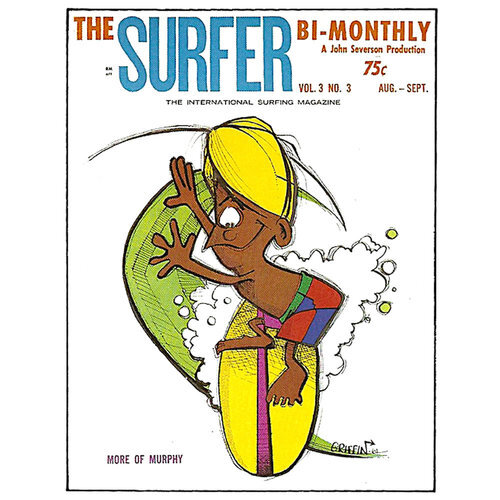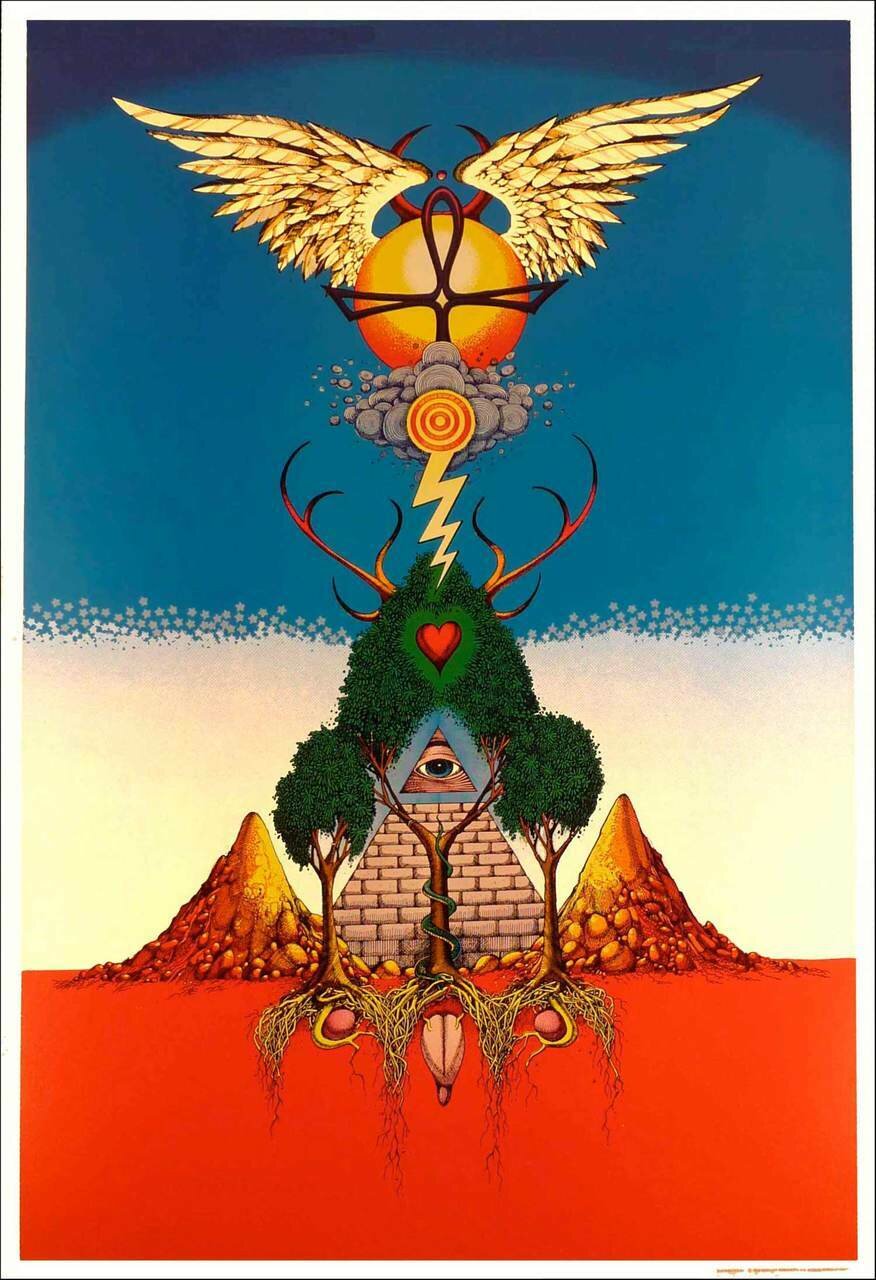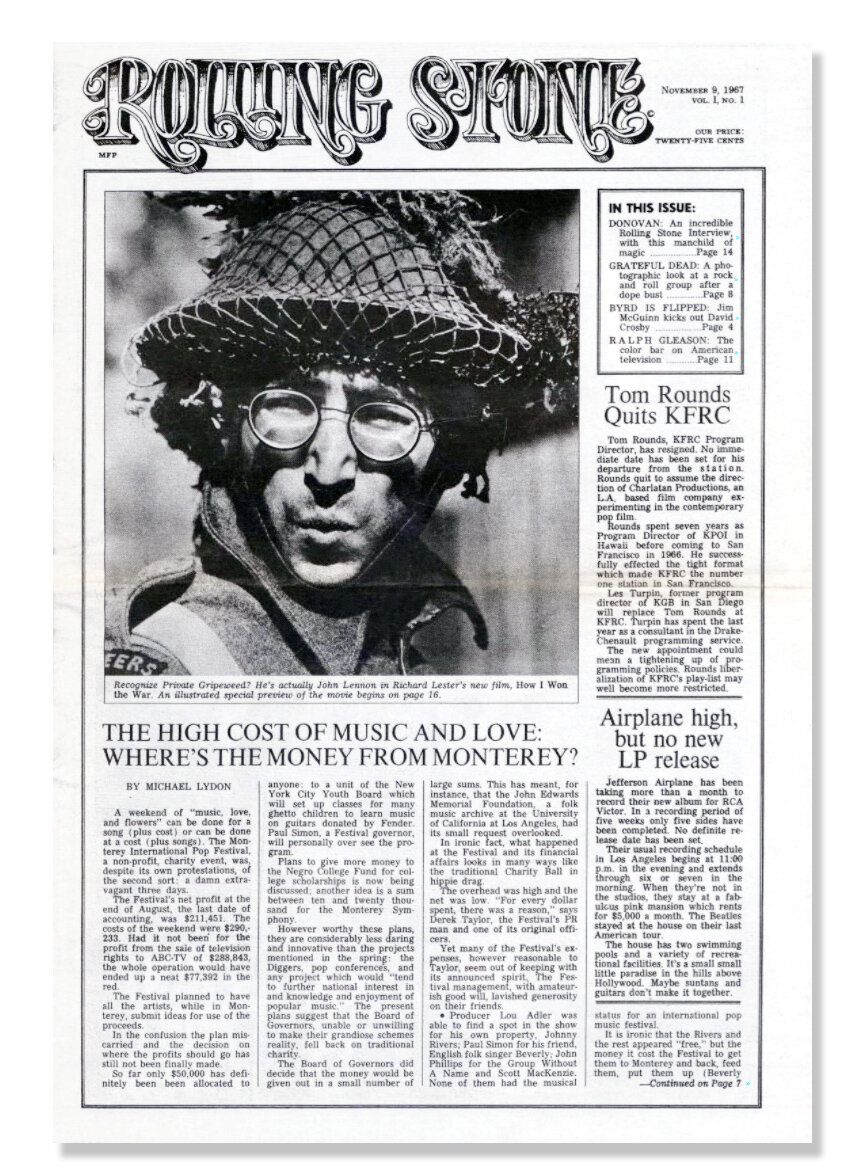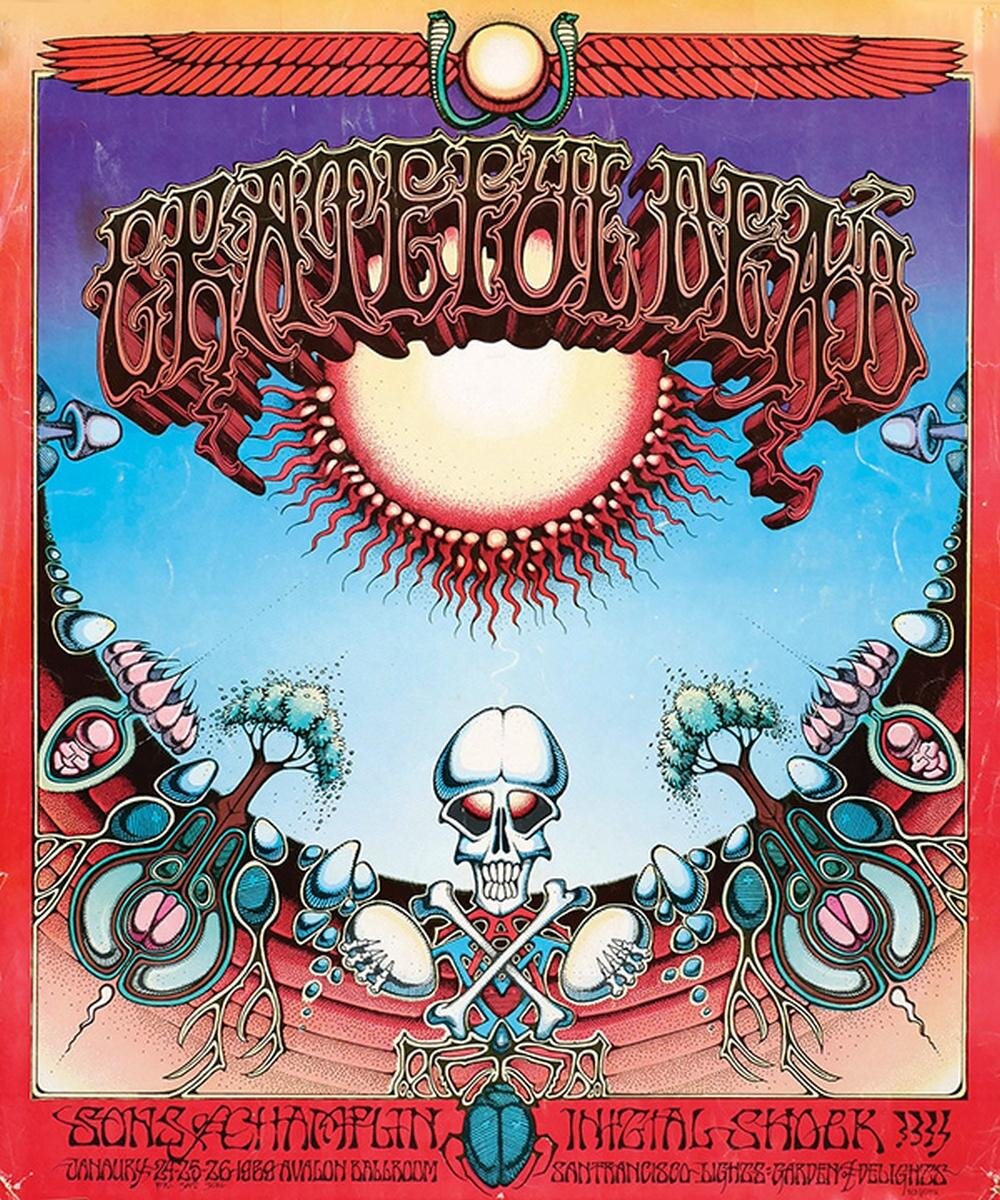Rick Griffin x The Hundreds
Eye On The Prize: Celebrating the Timelessly Trippy Art of Rick Griffin.
By: Duke London
If you love surfing, tripping on acid, listening to The Dead, or any combination of the three, you likely owe a great deal of credit to Rick Griffin for your whole aesthetic. Turn off the blacklight and take a closer look at those insane posters on your wall. The detached, floating eyeball. The wings, the skulls, the motorcycles, the typography that took center stage instead of a back seat. It’s all Rick.
Griffin told his life story through his art, incorporating pieces of his life into his work always. And Rick connected with countless fans that related, looking for an escape and something beautifully out-there to look at. From his early days drawing the beloved “Murphy” comic strip for Surfer Magazine to his groundbreaking posters for the likes of Jimi Hendrix and the Grateful Dead, Rick Griffin had the distinct and rare talent of being able to capture a feeling and put it on paper.
How do you describe an acid trip, how it makes you feel, how it changes the way you see things? You’d be hard-pressed to find a better way to describe the euphoric nature of the experience than a Rick Griffin original. The colors, the strangeness, the fear, the fun. There’s a reason Rick’s art has remained timeless, celebrated by art historians and burnouts alike, beloved by those trying to explore themselves without taking it all too seriously.
A pioneer of the psychedelic art movement, and all of the music and zines and comics that emerged from that era, Rick Griffin made a profound mark on millions around the world. Even if you didn’t know Rick, you (or your parents) surely had one of his posters on your wall, or one of his legendary album covers in your stack of vinyl, or surely a copy of Rolling Stone magazine, for which he drew the original logo in pencil.
Griffin’s life was a short, strange trip, taking him all over the world doing what he loved. Though he died at just 47 in a motorcycle accident, Griffin’s art has remained at the forefront of surf and psychedelic culture, describing the indescribable and putting smiles on faces, still.
We caught up with Noah Clayton, who helps run the Rick Griffin brand and also happens to be Rick’s grandson.
What about his art do you love and why do you think so many others love it?
One thing that gets talked about in his artwork is his line work, he’s considered a linework genius.
Other artists who are fans have repeated the sentiment that Rick allowed them to create what they wanted, Rick never wanted to be status quo or fit into any boxes. He gave fans and artists permission to express themselves in their own way.
My love for his art is very similar. It inspires and gives me permission to experiment and have fun. Beyond that, it is my connection to my grandpa I never got to actually meet. His art is so intricate and is able to weave a vivid story. I feel like it’s given me a connection to him and the ability to carry on his legacy.
How has Rick’s art stood the test of time?
Because he was at the forefront of pop culture in his time. He associated with icons like Jimi Hendrix and publications such as Surfer Magazine and Zap Comix, his artwork has always been in front of people.
However, he is somewhat considered one of the best-kept secrets of the underground artwork from the ’60s, ’70s, and ’80s, much like a band you discover before they blow up, you kind of don’t want anyone else to know about them. Because of this, his artwork has stood the test of time with loyalists but hasn’t been able to spread to as wide of an audience as I see possible. Much of what was underground then has become more widely accepted now, so it is exciting to see his name become more associated with his influence, as we work with brands like The Hundreds, among other projects.
Where do you see Rick’s influence in art and pop culture today?
EVERYWHERE! As I said before, he was at the forefront of many facets of pop culture of his time. He created an aesthetic for graphic T-shirts, comic strips, album covers, and concert posters.
You can see his massive influence when it comes to surf art, and the way he illustrated waves is still very prevalent today.
His typography is what I personally see the most in today’s world. He did some really far-out text in all of his works, and one of my favorites is what he used for the Jimi Hendrix flying eyeball poster, this is often considered the Rick Griffin font. However, he had many other excellent examples especially in comics, magazines, and his own publications like Man from Utopia. He was always finding ways to give words new life.
What would Rick be working on if he were still around today?
He was very creative in the way he cut and pasted some of his artwork together, in some ways he was using Photoshop before it was ever around. He would put different pieces of art together or sometimes paint over things entirely and keep the rest. It would be incredible to see what he could create with today’s technology.
I believe he would still be working with popular bands, and absolutely integrated into surf culture. His artwork was great for advertisements and with today’s climate of giving artists a lot of freedom, he would be part of some cool ad campaigns, I believe.
Just before he passed, he was doing some incredible fine art paintings. I think most of what we would see today is a large collection of highly sought-after paintings, he did not get to tap into that genre for long but what he did create was transcendent and awe-inspiring.
Why did Rick love psychedelics and how did they play into his artistic style?
Rick was around for the beginning of psychedelics, he was at the Watts acid test among other first events so he was part of the initial experiment and experience. There were no rules or laws against it. As anyone who’s partaken knows, psychedelics can lead to a very creative mindset, and given Rick’s talent, he got to forge the psychedelic aesthetic. Spending time with his work, you can see just how reflected the imagery of psychedelics is. He had a gift to see and recreate in an extraordinary way so others were able to not just get a glimpse but a grand display of what was waiting on the other side of a tab of acid.
What led to Rick finding God later in life?
He always had an affinity for spirituality and mysticism, or as my Grandma (his wife) calls it, symbolism. It was only a matter of when some of his friends began to introduce Jesus to him, as he didn’t grow up with that influence. He took to it quickly and let it show in his art as well.
How did his newfound love of Christianity affect his art?
It gave him new inspiration and he began looking further into Christian artwork and books. With his already polished art skills and the new world of Christian art, he created some of his most incredible fine art paintings. He also got to illustrate the gospel of John, which included some of my favorite works he produced.
What are your favorite pieces of Rick’s work?
Most recently, my favorite has been the cover of his own comic publication Man from Utopia. I used the character and handle Man from Utopia as my alter ego when I moved away from family for a few years, it helped keep me connected to my family and lineage as well as gave me permission to be myself and express myself fully.
Another one of my favorites is a painting that I first saw when I was just a kid (about 8 years old) at The Heart and Torch, Rick Griffin’s major museum retrospective show at the Laguna Art Museum in 2007. It’s this painting of chains ripping towards a glowing orange light in the center of the piece, there is a broken lock in the shape of a heart hanging off one of the chains. I remember being totally awestruck and it’s been one of my favorites ever since.












